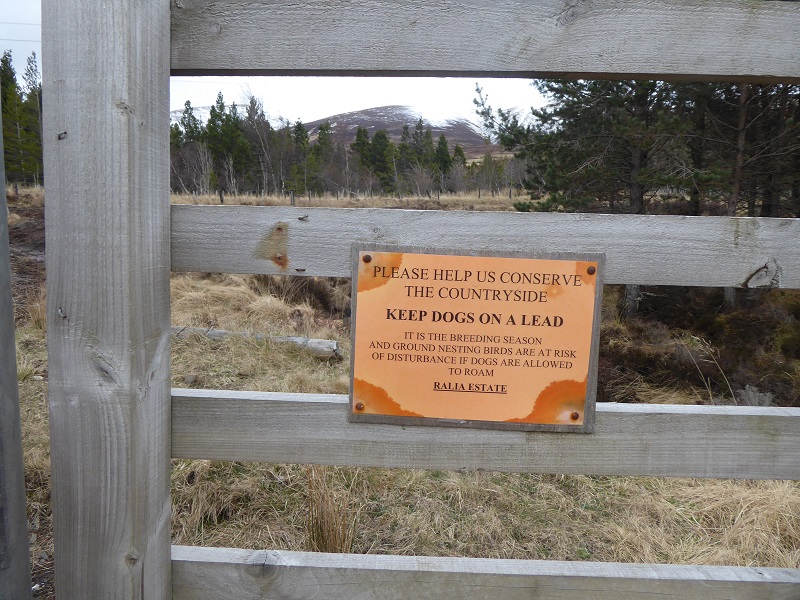
On Wednesday evening I went to have another look at the northern section of the access track which had been created for the construction of the Beauly Denny powerline and which was due to be restored last year (see here). Its situated on the east side of the A9 behind the tree shelter belt and opposite the southern turn off to Dalwhinnie.
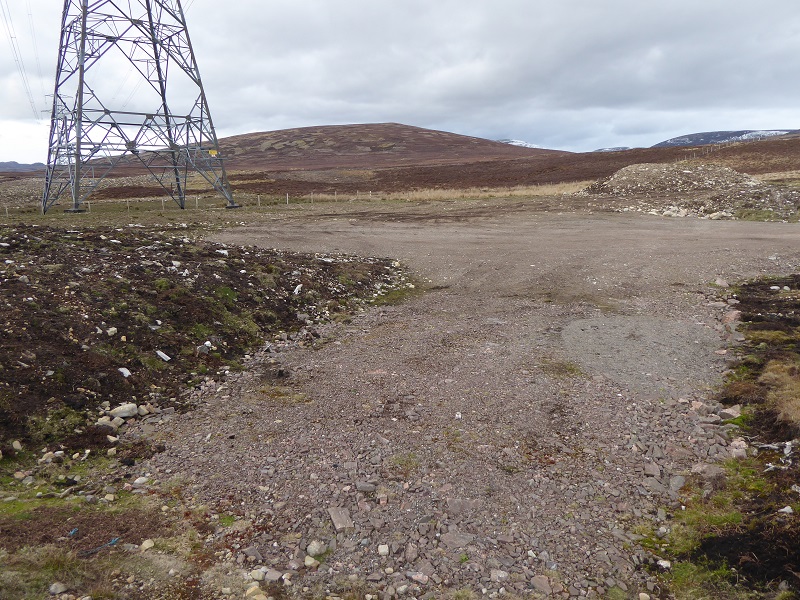
That post resulted in the North East Mountain Trust, who had been concerned about the original planning application, taking the matter up with the Cairngorms National Park Authority. It transpires that the Estate had been involved in lengthy discussions with the Scottish Environment Protection Agency about the details of how they were going to restore the track, missed the deadline and the CNPA has now extended it until the end of 2017. There was provision for this under the conditions attached to the planning consent which lasts until February 2018. Unfortunately there are still no details of this on the CNPA planning portal (see here) where the last available document is dated July 2015. If you are a member of the public, therefore, not only does it appear that the estate has failed to restore the track within the deadline but also that the National Park has done nothing about this. The CNPA is letting itself down and, I believe, making planning enforcement much harder for itself because of this lack of transparency.
The CNPA did though state to NEMT that, should the Estate fail to restore the track as per the planning permission it granted by the Park Authority, once the CNPA planning permission lapses the ground would need to be completely restored, as per the Section 37 Electricity Act consent for the Beauly-Denny. They said the Scottish Government would be responsible for enforcing this. (I am unclear how this can be reconciled with earlier advice I received from the Scottish Government that “In relation to the enforcement of conditions on planning consent, this is primarily the responsibility of the relevant planning authority, i.e. the planning authority within whose area the development is taking place”). If it comes to that, four years will have been lost in which this land could have been restored properly to the benefit of both landscape and wildlife. Funny how delays in our planning system are always portrayed as being the fault of planning authorities when in fact by far the biggest delays and created by developers/landowners.
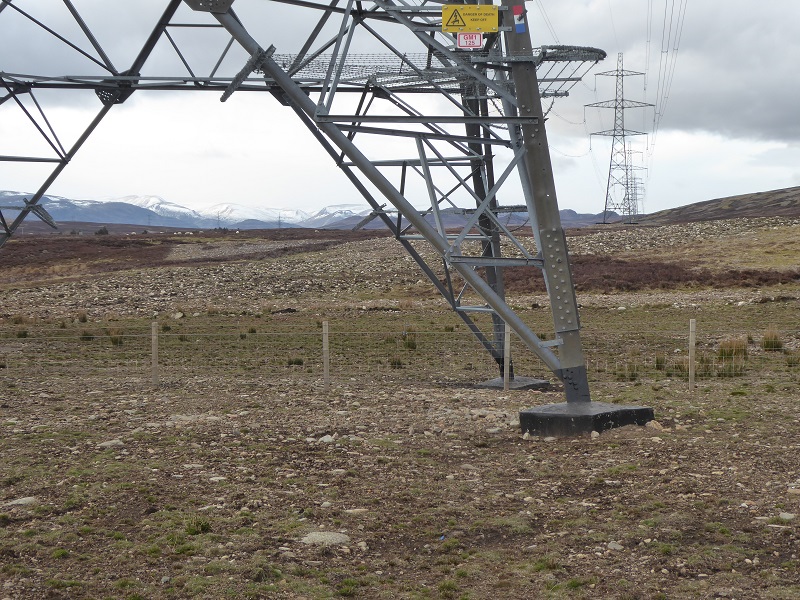
Meantime, the Scottish Government is even less transparent – one rule for local government, another for national government – and removes planning applications it approves from the public realm. There is therefore no convenient means for the public to find out how the restoration of the Beauly Denny is going. I resorted to a FOI request to the CNPA about what information they held and was – again very helpfully – provided with information about the restoration of land under the 76 towers and approx 28km of track that are within the National Park boundary.

According to SSE most of the restoration for which it is still responsible is going well – or rather is “of an acceptable standard”. I think the photos show otherwise, as does a report the CNPA’s peatland officer in 2015 (see here) – well done him and the CNPA. What the papers, which I will come back to in further posts, show is that SSE is just hoping all the destruction which it caused will regenerate naturally, whereas the CNPA and SNH are concerned whether this is going to happen. The problem is the CNPA appears to have very little power to make SSE do anything – although if it went public with its concerns that I think would make a significant difference.
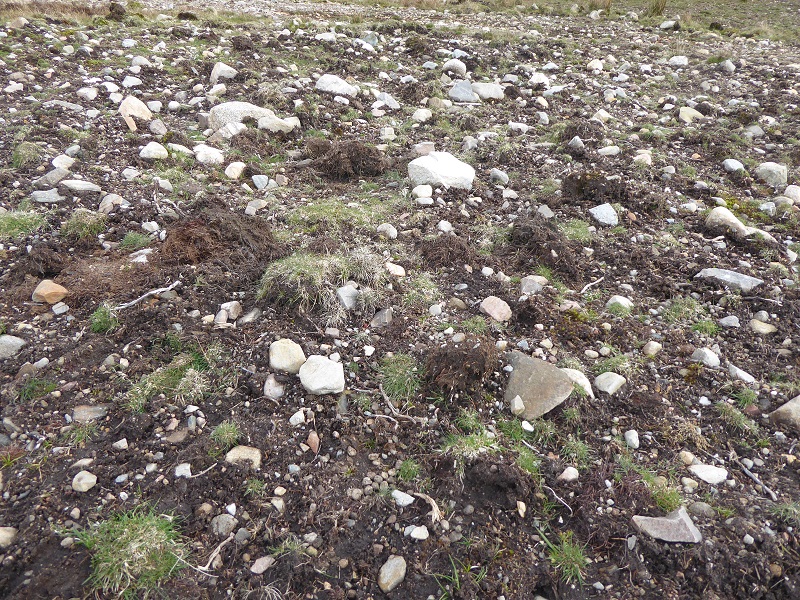
So why has Ralia estate taken over the burden of restoring the land from SSE?
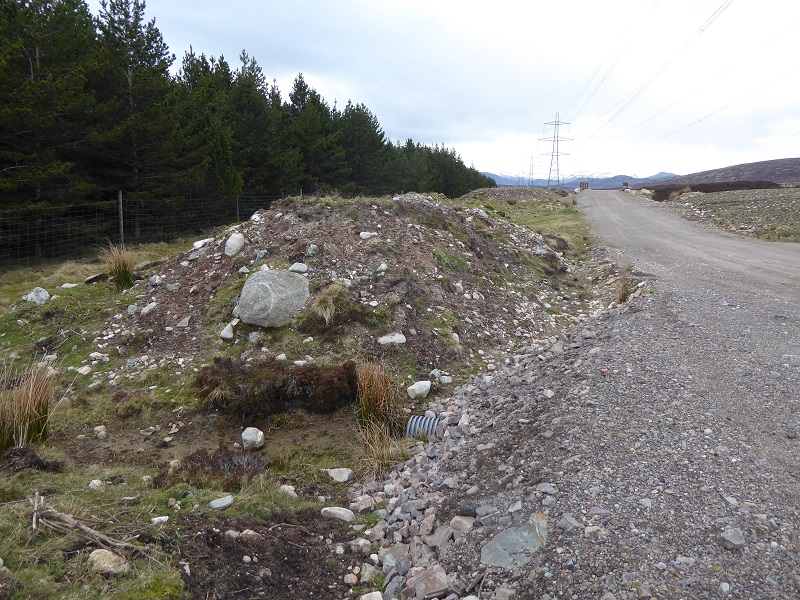
The amount of work – and therefore cost – in meeting the approved design plans for the track are considerable. The 4.7 km of track needs to be reduced from its current width of 5-7m to 3m.
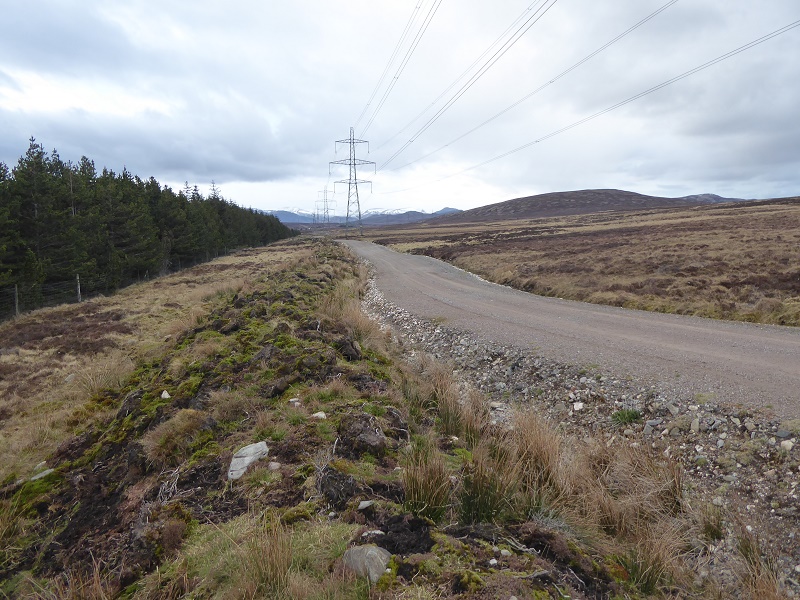
So much aggregate has been imported to construct the track that even where turves have been properly stored, re-landscaping will be a real challenge. The planning permission granted by the CNPA specifies that excess materials will be removed, which would make landscaping considerably easier – a great requirement but will the estate do it?
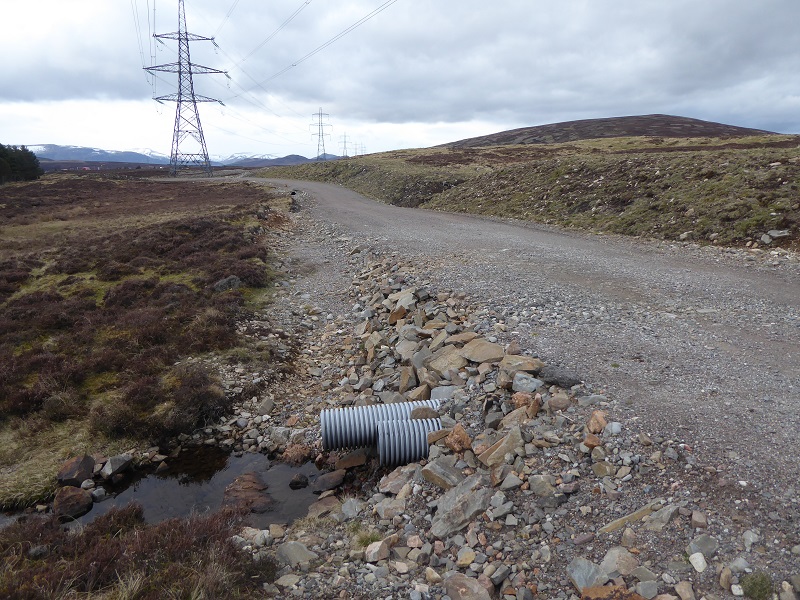
The job will not be made any easier because so much of the temporary construction work was so poor. If this track is to be halved in width, so will the drainage pipes.
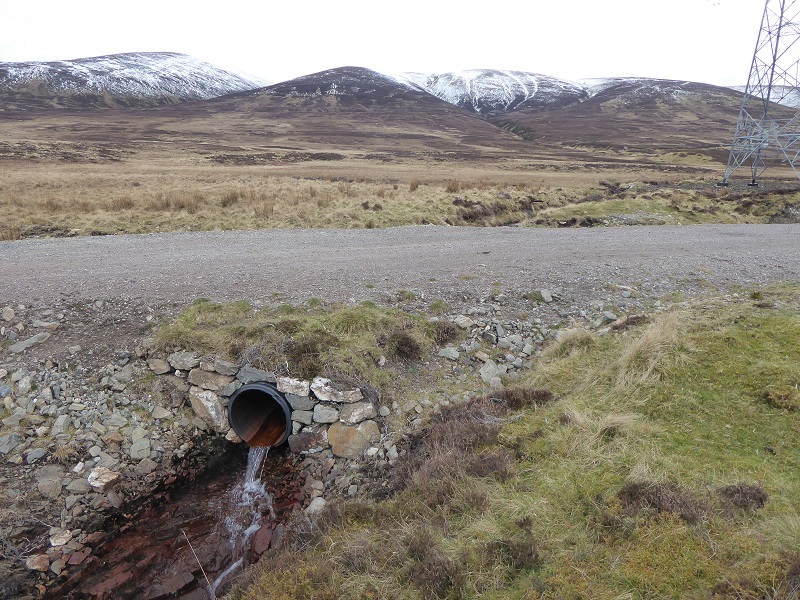 Bizarrely, among all the protuding pipes, there was one example of a culvert which had been properly finished – at both ends too! Unfortunately, the track here was even wider than normal, 7m rather than 5m, and at least one of the finished culverts will need be ripped out if the track is to be reduced in width to 3m. If this work was done by SSE, one wonders why? If by the Estate, that would suggest they are intending to keep the track at its current width, contrary to planning requirements.
Bizarrely, among all the protuding pipes, there was one example of a culvert which had been properly finished – at both ends too! Unfortunately, the track here was even wider than normal, 7m rather than 5m, and at least one of the finished culverts will need be ripped out if the track is to be reduced in width to 3m. If this work was done by SSE, one wonders why? If by the Estate, that would suggest they are intending to keep the track at its current width, contrary to planning requirements.

The reason why the estate wanted to retain the track though quickly became apparent. It makes it much easier for the gamekeepers to manage animal traps or, from their viewpoint, “to conserve the countryside”. This was the first time I had seen a live bird in a Larsen trap in 100s of visits to the hills (not a coincidence, they are usually tucked away like this) and I found it quite distressing but then I see crows as beautiful creatures, one of the most intelligent of all birds, and not pests. The crow was hopping up and down and beating its wings against the side of the trap – that’s what’s meant to happen, it attracts other crows wishing to defend their territory. All my instincts were to free it but that, I recalled somewhere, is a criminal offence.
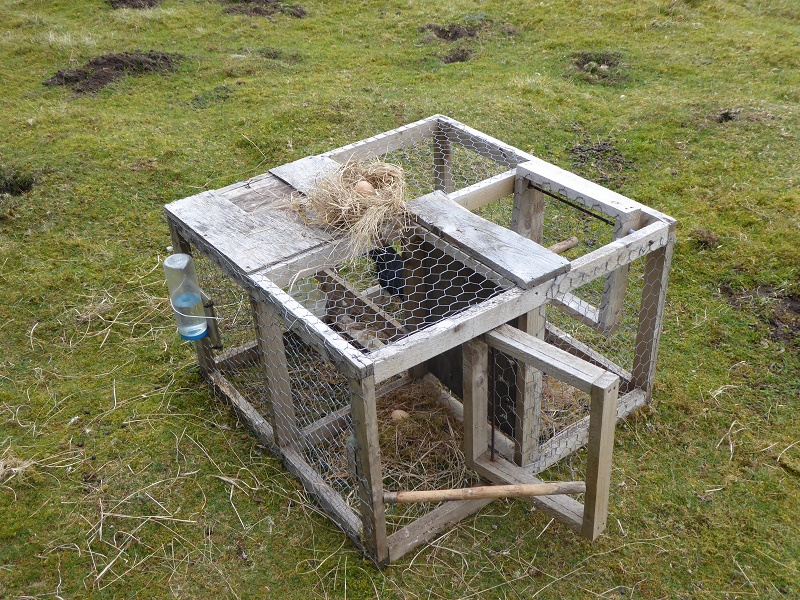 The ostensible purpose of Larsen traps is that the flapping crow (or other corvid) attracts others which are then lured into one of the two traps. In Scotland only hens’ eggs or bread are allowed as bait (as here). The theory and use of these traps from the landowner viewpoint is set out in guidance from the Game and Wildlife Conservation Trust (see here). The trap in the photos appeared to meet all animal welfare requirements about provision of water, food and a perch for roosting at night. While Scotland has stricter requirements than England on the use of these traps, under General License under the Wildlife and Countryside Act, it seems to me there is question about whether this General License should extend to National Parks.
The ostensible purpose of Larsen traps is that the flapping crow (or other corvid) attracts others which are then lured into one of the two traps. In Scotland only hens’ eggs or bread are allowed as bait (as here). The theory and use of these traps from the landowner viewpoint is set out in guidance from the Game and Wildlife Conservation Trust (see here). The trap in the photos appeared to meet all animal welfare requirements about provision of water, food and a perch for roosting at night. While Scotland has stricter requirements than England on the use of these traps, under General License under the Wildlife and Countryside Act, it seems to me there is question about whether this General License should extend to National Parks.
While the GWCT claim there is little evidence of raptors being caught in such traps and that live traps such as this allow protected birds to be released, that claim needs to be taken with a pinch of salt given the level of persecution of raptors on grouse moors. Why would estates ever report if hen harriers, say, were found in such traps? Maybe I am unobservant, or always unfortunate in my timing, but while there were large numbers of grouse about (and some song thrush, pied wagtail and wheatear) there was not a sign of a hen harrier.
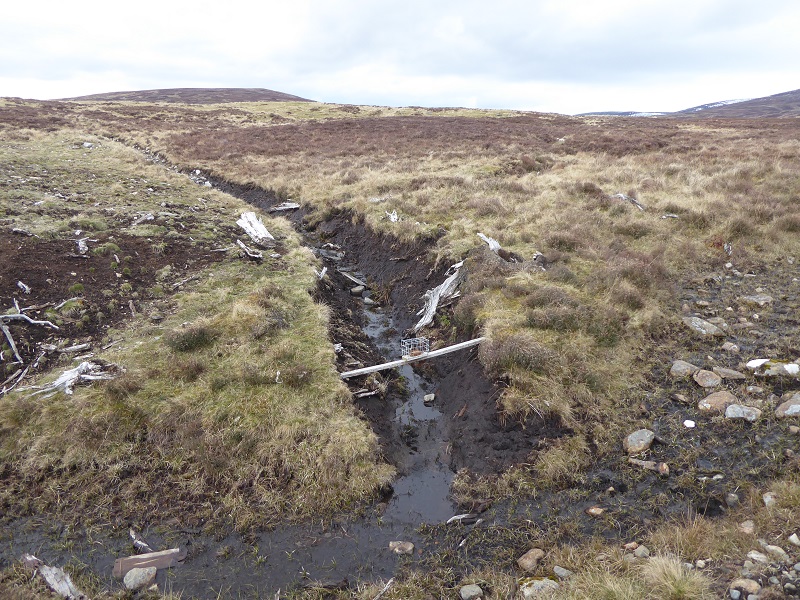
What was clear was that the estate was trapping anything else that might prey on grouse. The tracks make maintenance of such traps easier for estate staff.
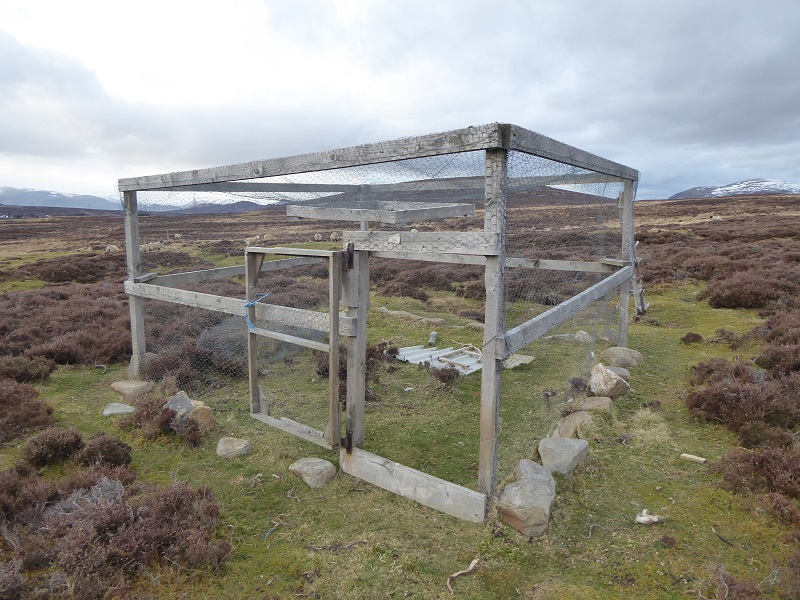
A multi-catch cage trap was located slightly further away from the track – as recommended by GWCT – part of the reason being to avoid the public coming into them while in use and becoming distressed. What is clear to me is the CNPA, by granting planning permission, for the retention of this track has made it much easier for estate staff to trap and kill anything that is perceived as a threat to red grouse. The CNPA talks about the need for balance between competing interests, but in terms of species there is no balance. Everything is about increasing numbers of red grouse.
While as the link shows, the numbers of grouse at Ralia have increased dramatically, what is not reported is the numbers of other species that predate on them.
The CNPA’s consent to Ralia Estate retaining this section of track appears to have had little impact on their off-road use of vehicles. Indeed, Ralia estate appears to be creating further tracks without any planning permission.
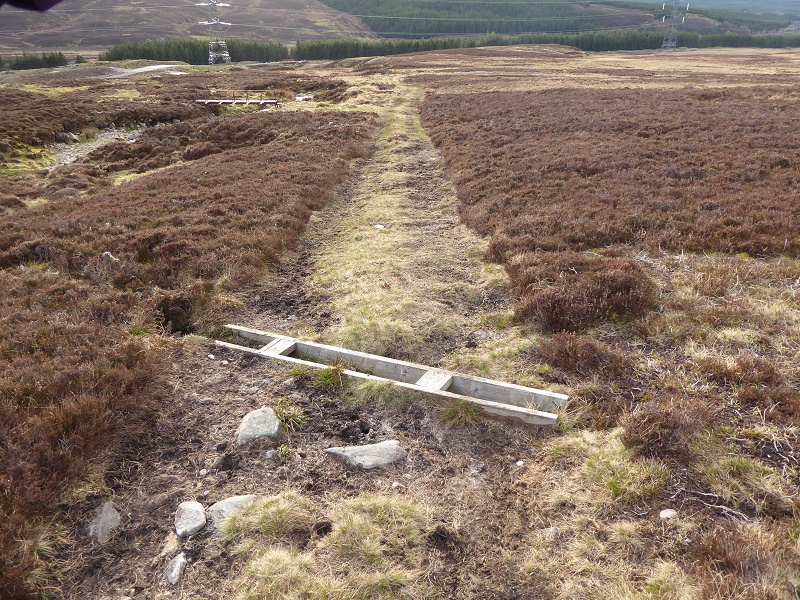 The track that has been developed along the line of grouse butts on the north side of the Allt Coire nan Cisteachan. The installation of a water bar means, I believe, that this counts as a constructed track and should have had full planning permission – its purpose, along the line of grouse butts is only too clear and has nothing to do with agriculture (where developments only require “prior notification”).
The track that has been developed along the line of grouse butts on the north side of the Allt Coire nan Cisteachan. The installation of a water bar means, I believe, that this counts as a constructed track and should have had full planning permission – its purpose, along the line of grouse butts is only too clear and has nothing to do with agriculture (where developments only require “prior notification”).
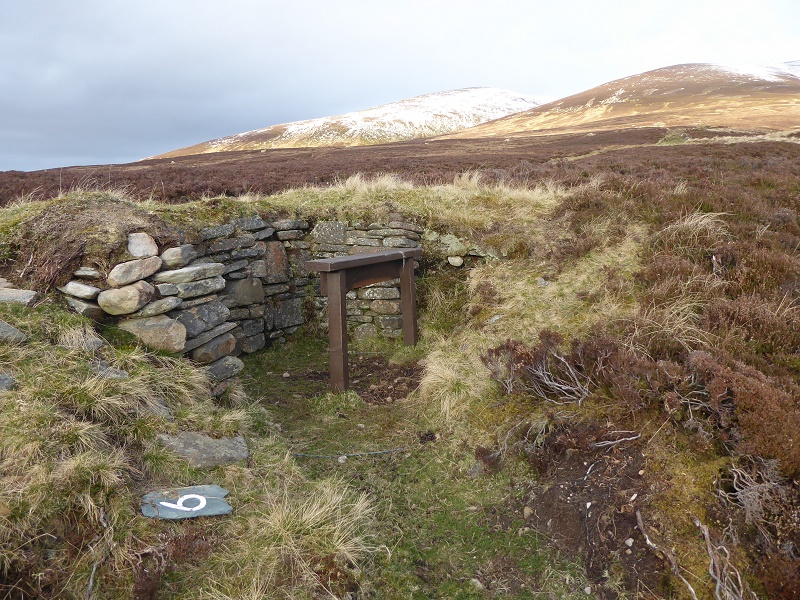
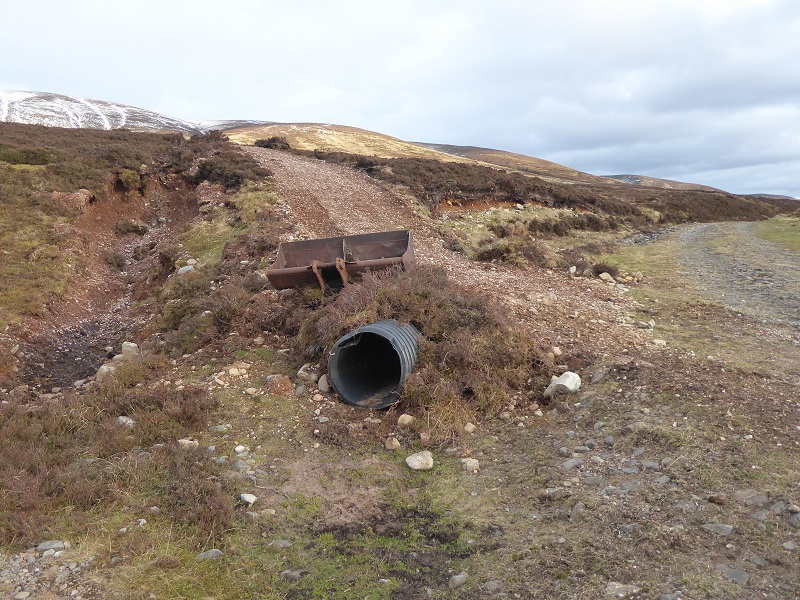
The constructed nature of the track on the south side of the burn is even more obvious and to an appalling standard (I will report it to the National Park). Although the newly “constructed” section is short, its intention is clearly to enable vehicle access up the hillside easier and yet more scars on the Drumochter.
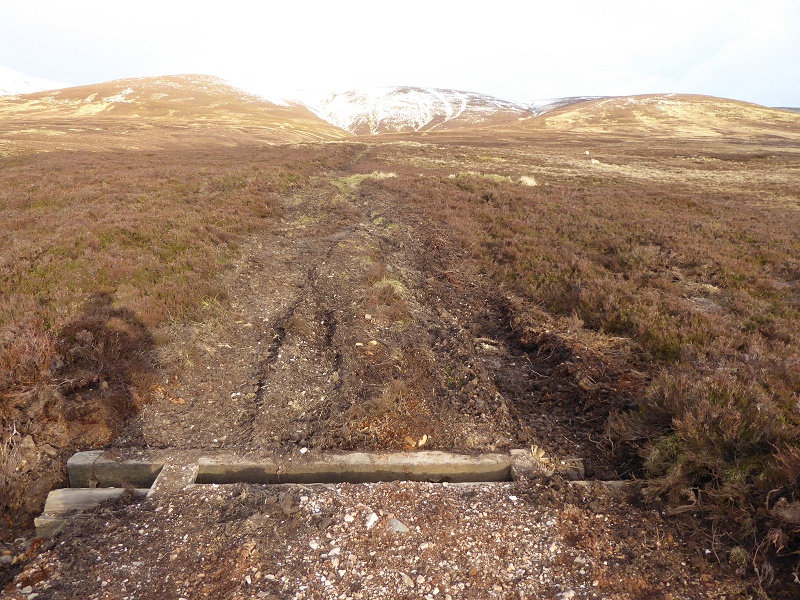
The issue at Drumochter therefore is not just about restoration of the Beauly Denny or planning permission for hill tracks and what they are then used for – although both have had major and unnecessary impacts on the landscape – its about what off-road use estates should be allowed to make of vehicles in the National Park. In my the National Park could contain and control all these issues through the use of byelaws which introduce licenses for hunting. Such hunting licenses could require estates not to use vehicles off-track or trap any animal without explicit permission.